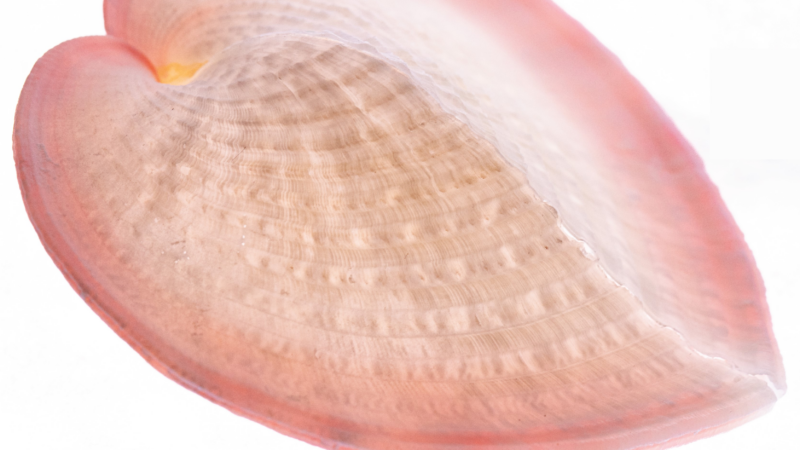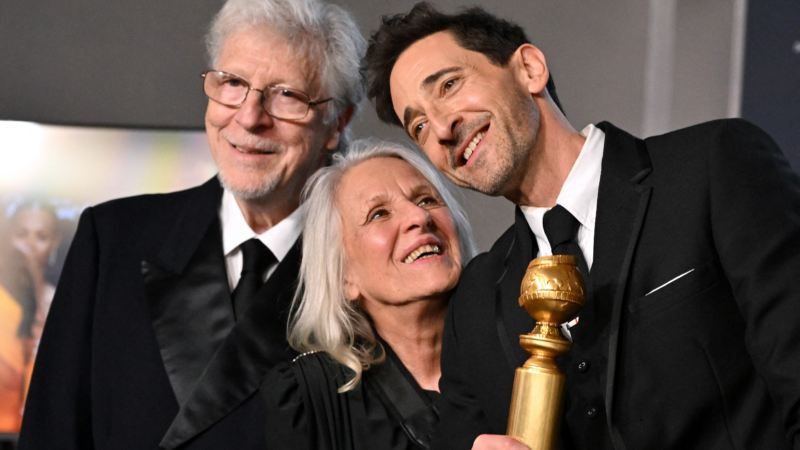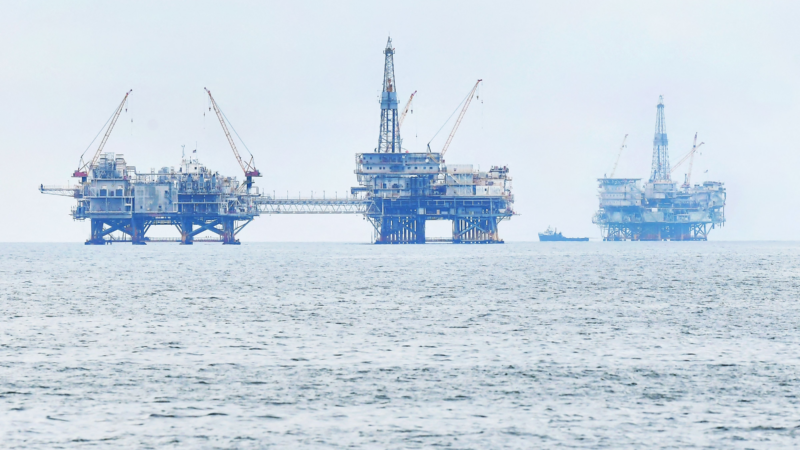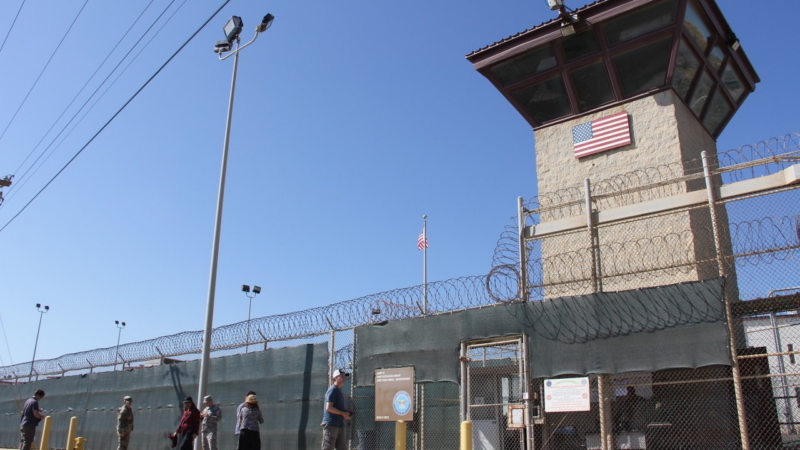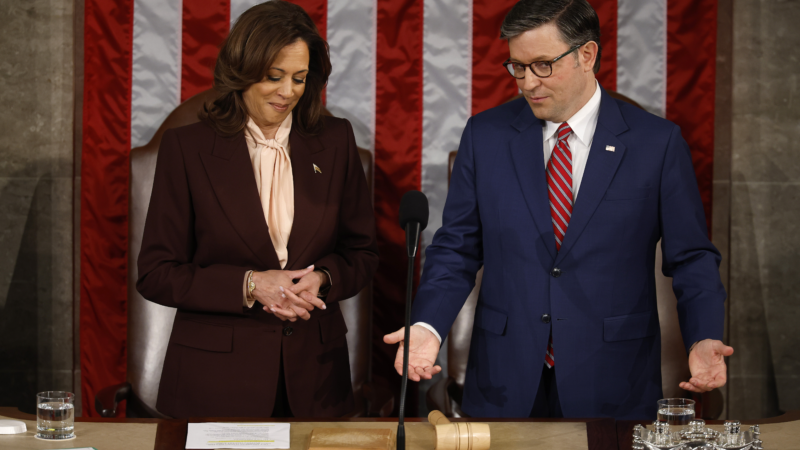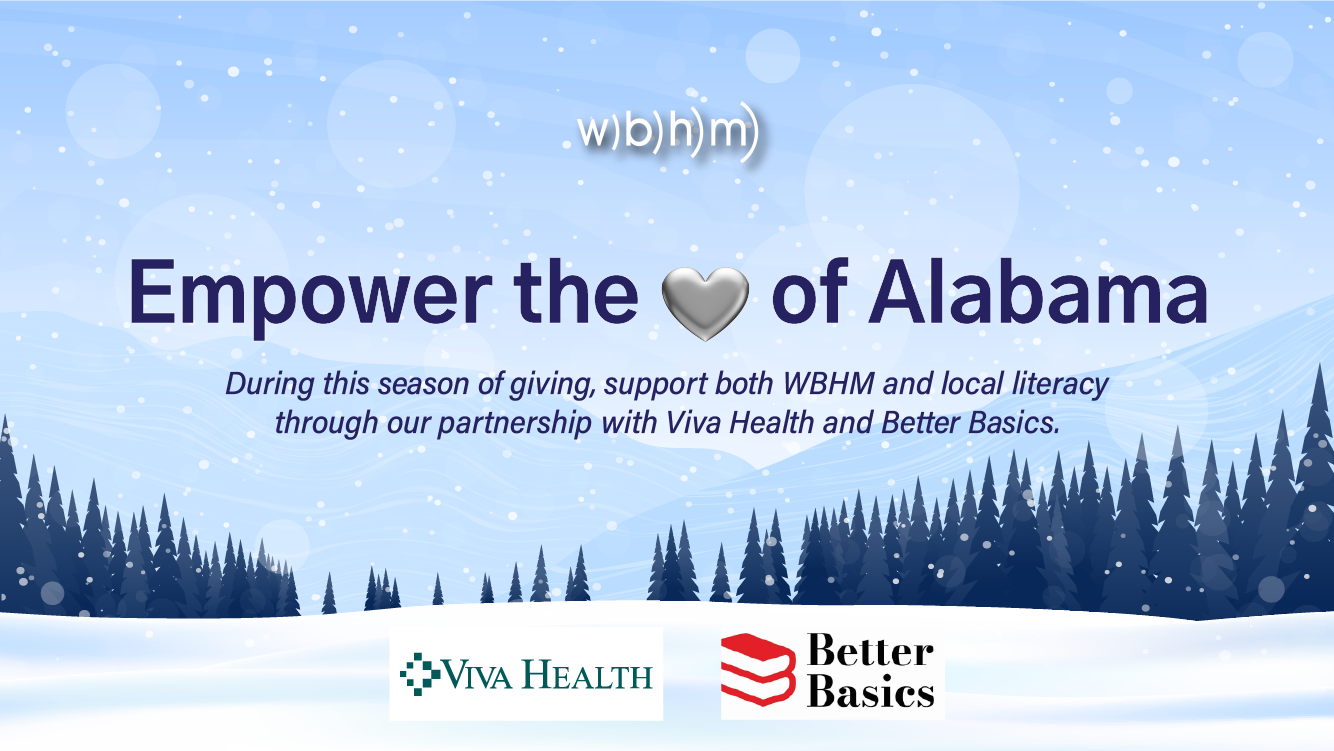What a mollusc shell and fiber optic cables have in common
Healthy corals are colorful and full of life. And under normal conditions, corals and algae depend on one another. The corals offer the algae protection and the photosynthesizing algae provide the coral with the components they need to make proteins and sugars. As waters warm, though, corals often bleach, which means they eject their algae.
“The corals look white or sometimes black cause they’ve died,” says Dakota McCoy, a biologist at the University of Chicago. “There’s no fish around. It’s way less biodiverse.”
However, “if you snorkel over a reef after a heat wave, other animals still look healthy,” says McCoy. “They’ve still got their algae unlike the coral. It seems to take more to get them to bleach. So that’s kind of a weird biological mystery.”
These seemingly healthy creatures include a clam-like mollusc called a heart cockle — the name coming from the shape of its shell. “These strange little clams are a little bit tougher than corals,” says McCoy, “even though they host the same type of algae inside their cells that corals do.”
McCoy wanted to know why that might be. In a paper published in Nature Communications, she and her colleagues conclude that the structure of the heart cockle’s shell operates as its own kind of fiber optic cables to channel light to the algae living inside it. It’s a finding that may have both engineering and conservation implications.
Stained glass in miniature
McCoy and her colleagues began their investigation by shining LED lights through the heart cockles. “In a lot of shells, there [are] tiny little triangles where the light passes through. In some of the shells, it looks more like big zebra stripes. Some of the shells, they look like stained glass windows. So there’s material there but light gets through.”
She wanted to know how the heart cockles render their shells transparent to get the light to their algal residents that depend on it. “Are they doing something more interesting than just letting light pass through?,” she wondered. So she gathered some cockles from the Yale Peabody Museum of Natural History and an online collector for a closer look.
An instrument called a spectrophotometer, “can measure what color light passes through a little fragment of shell suspended in seawater by scanning over every wavelength of light from ultraviolet to infrared,” McCoy explains.
She and her colleagues found that the little windows in the heart cockle shells stream more than twice as much useful sunlight into their interiors for their algal tenants than harmful UV radiation.
In addition, some individuals have mineral lenses beneath their little windows. “What they seem to do is condense light into a beam so that it’s illuminating more deeply into the algae-rich tissue that’s doing all the photosynthesis,” says McCoy.
The lens may also spread the light out “so you’re not going to actually burn your [algae] or have too much light intensity,” says Stanford University physicist Jennifer Dionne, who collaborated with McCoy.
Natural fiber optics
McCoy and Dionne then looked more closely at the shell’s architecture. They knew it was made out of a kind of calcium carbonate, aragonite, a mineral that’s usually opaque in coral skeletons or other clam shells. When those structures are examined under a microscope, McCoy says, “you see lots of big plates that are jumbled together and often arranged in a very sturdy brick-like manner.”
But when she used an electron microscope to study the mineral structure of the heart cockle shell, the calcium carbonate crystals were organized into long, super narrow fibers that were “all oriented the same direction as the direction that sunlight needs to travel to get into the shell,” she says.
Dionne instantly saw something familiar. “Here’s a natural organism that is guiding light essentially via its own fiber optic bundles to basically help its symbionts harness sunlight,” she says. “I think it might be one of the first examples in nature.”
The researchers say that structure could inspire tiny cameras with miniscule lenses or even improve fiber optic cable technology. “I think there’s a lot we can learn about how biology handles light,” says Dionne.
University of Georgia cell biologist Mark Farmer wasn’t involved in the research and was impressed with the paper. “It’s difficult to balance the needs of a strong structural shell — which is of course the reason that clams make shells in the first place — with light transmission,” he says. “So I think the fact that the cockles have solved effectively both problems with these fiber optics is the most significant finding.”
Farmer says the results may help explain why corals tend to bleach more readily than heart cockles, a phenomenon triggered by stress. While both organisms may be exposed to the stress of warming ocean temperatures, “by eliminating that additional stress of ultraviolet light, which can damage DNA, the cockles are perhaps less subject to the kind of stress that would lead to a bleaching event,” says Farmer.
McCoy agrees and believes that this difference could provide insights into how to help corals.
“Can we think a little bit more about how heart cockles manage the light environment for their algae and maybe take inspiration from that to engineer new algae or new corals — a little bit more resilient, a little bit more robust?” she asks.
McCoy sees in these shells more than a billion years of evolution — what she calls “product design honed by natural selection.”
“The heart cockle is a very cool story of how a living creature can manipulate light as well as many human engineers can,” she says. “It’s a beautiful example of a sustainable creature using solar energy in a very efficient way, thanks to an amazing natural evolved technology.”
Transcript:
MARY LOUISE KELLY, HOST:
There’s a sea creature that uses its own kind of fiber-optic cables to channel light to the algae living inside it. Wrap your head around that one. Science reporter Ari Daniel explains this could have implications for everything from cameras to coral.
ARI DANIEL, BYLINE: Healthy corals are really colorful and full of life, so there’s no mistaking those that have bleached due to warming ocean temperatures.
DAKOTA MCCOY: The corals look white or sometimes black ’cause they’ve died.
DANIEL: Dakota McCoy is a biologist at the University of Chicago. She says corals normally house algae, and the two depend on one another. As waters warm, though, corals often eject their algae. That’s bleaching. And yet…
MCCOY: If you snorkel over a reef after a heat wave, other animals still look healthy. So that’s kind of a weird biological mystery.
DANIEL: These seemingly healthy creatures include a clam-like mollusk called a heart cockle.
MCCOY: Heart because they look like a heart shape (laughter) – these strange little clams are a little bit tougher than corals, even though they host the same type of algae.
DANIEL: McCoy suspected the heart cockle’s shell might be involved.
MCCOY: Some of the shells – they look like stained glass windows. So there’s material there, but light gets through.
DANIEL: McCoy wanted to know how do heart cockles make their shells transparent to get the light to their algal residents that depend on it. She gathered some cockles for a closer look.
MCCOY: So you can measure what color light passes through the shell by scanning over every wavelength of light from, you know, ultraviolet to infrared.
DANIEL: She and her colleagues found that the little windows in the heart cockle shells stream more than twice as much useful sunlight into their interiors than harmful UV radiation. In addition, some individuals have these mineral lenses beneath their little windows.
MCCOY: What they seem to do is condense light into a beam so that it’s illuminating more deeply into the tissue that’s doing all the photosynthesis.
DANIEL: McCoy then looked more closely at the shell’s architecture. She knew it was made out of a kind of calcium carbonate, a mineral that’s usually opaque in coral skeletons or other clamshells. But when McCoy used an electron microscope to study the mineral structure of the heart cockle shell, the calcium carbonate crystals were organized into these long, super narrow fibers.
MCCOY: All oriented the same direction as the direction that sunlight needs to travel to get into the shell.
DANIEL: She and her colleague, Stanford University physicist Jennifer Dionne, instantly saw something familiar.
JENNIFER DIONNE: There’s a natural organism that is guiding light, essentially via its own fiber-optic bundles, to basically help its symbionts harness sunlight.
DANIEL: The researchers say that structure could inspire tiny cameras with minuscule lenses or even improve fiber-optic cable technology. The research is published in the journal Nature Communications.
MARK FARMER: Oh, I was very impressed with it.
DANIEL: Mark Farmer is a cell biologist at the University of Georgia who wasn’t involved in the study. He says the results may help explain why corals tend to bleach more readily than heart cockles, a phenomenon triggered by stress. While both organisms may be exposed to the stress of warming oceans…
FARMER: By eliminating that additional stress of ultraviolet light, which can damage DNA, the cockles are perhaps less subject to the kind of stress that would lead to a bleaching event.
DANIEL: It’s a difference that Dakota McCoy says could provide insights into how to help corals.
MCCOY: Can we maybe take inspiration from that to engineer new algae or new corals? – a little bit more resilient, a little bit more robust?
DANIEL: She sees in these shells more than a billion years of evolution – what she calls product design, one that allows these creatures to manipulate light.
MCCOY: You know, as well as many human engineers can.
DANIEL: For NPR News, I’m Ari Daniel.
(SOUNDBITE OF MUSIC)
Adrien Brody dedicates Golden Globes win for ‘The Brutalist’ to his immigrant family
The post-war epic was nominated in several categories. Like Brody's real-life mother, Brody's character is an immigrant from Hungary who fled conflict.
Biden makes an 11th-hour move to block coastal oil drilling
President Biden has issued an executive order blocking drilling for oil in more than 625 million acres of U.S. ocean. It's the largest such move in history, but is almost guaranteed to be challenged under the incoming Trump administration.
U.S. transfers 11 Yemeni prisoners from Guantánamo to Oman
The Biden administration's move leaves just 15 detainees at the U.S. military prison at Guantánamo Bay, Cuba. Oman will help resettle the men and provide security monitoring.
Hamas and Israel are negotiating the release of 34 hostages from Gaza
The deal would secure release of a third of the approximately 100 hostages who remain in Gaza, including two dual U.S.-Israeli nationals. In return, Israel would release some Palestinian prisoners.
Millions of public workers are set to get higher Social Security benefits. Here’s why
Public service workers, including some teachers, firefighters and police officers, may soon see their Social Security payments increase by hundreds of dollars monthly.
Under the shadow of the Jan 6. 2021 riot, Congress certifies the 2024 election
Four years after the riot at the Capitol, Congress meets under heavy security and a blanket of snow to certify the 2024 election.
